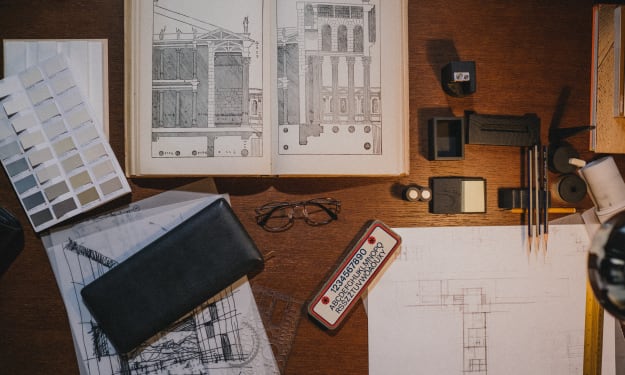
It is generally believed that online literary arts in China originated in the 1990s, and in 2015, the term "online literary arts" appeared in the Central Committee of the Communist Party of China's Opinions on the Prosperity and Development of Socialist Literature and Arts. This was the first time that "online literary arts" was mentioned positively as a concept in a central document resolution, which played an important role in promoting the development of online literary arts. In recent years, online literary arts have gradually escaped the early state of barbaric growth and embarked on an orderly and standardized development path. Accordingly, as various sub-genres, including online art, continue to grow, online literary arts have in fact become a collection of "different art disciplines + the Internet"; at the same time, various forms of "pan-literary arts" have flourished through the advantages of the Internet, and many new styles of art have emerged. At the same time, various forms of "pan-literary art" have flourished through the advantages of the Internet, and many new artistic styles have emerged, making the large family of online literature and art increasingly rich and complex.
As a new form of literature and art emerging from the Internet, networkedness and artistry are undoubtedly the two most essential attributes of networked literature and art, and in fact it is the combination of the two that has given birth to this artistic variety. However, it goes without saying that there is a profound inherent contradiction between networkedness and artistry, and this contradiction is constantly revealed during the development of networked literature and art. For example, the Internet naturally requires highlighting the subjectivity of the masses, while artistic creation has been the activity of a specific group since its self-awakening. In the context of the modern art system, when faced with the question of "what is art", the confirmation from professional forces is even more decisive.
For example, when a painting is exhibited in an art exhibition and collected by an art museum, its "artistry" will be more clearly confirmed and its artistic value will most likely increase. However, if the same painting is neither exhibited in an art exhibition nor in an art museum, but circulated on the Internet, hung on a website, forwarded in the circle of friends, or even made into wallpaper, screensavers, or emoji packs, the number of people who can see it and appreciate it will be much higher than the audience of art exhibitions and art museums. But in the confirmation of "artistry", it may not be very useful.
This brings us to the issue of literary and artistic evaluation, especially literary and artistic criticism. Over the years, literary and artistic reviews have also derived from networked literary reviews under the impact of the networked wave, and the contradictions and tears suffered by networked literature are also being experienced by the reviews. Literary and artistic criticism in the pre-Internet period was mainly a professional act, and by "professional" here I mean both professionalism and professional identity. Without the public opinion space built by the Internet, due to the limited and exclusive voice channels and platforms, it would have been difficult for people without a "professional identity" to evaluate or comment on works of art, even if they had professional attainments, to spread among the general public or the industry. As an activity with strong objectivity and realism, literary and artistic criticism has the distinctive characteristic of "not arriving unfinished". Those "reviews" that are not disseminated are like silent cries, and their value is mostly limited to codification materials for the history of art thought, and they hardly play a role in the creation of a common time. Since the Internet, things have changed. The "identity" barrier has been broken down, and the silent public has not only gained an unprecedented channel of voice, but also a certain power of judgment. Of course, although it is a fact that "everyone is a critic", it is still far from being integrated into the art system. In a sense, this has exacerbated the conflict between "networkedness" and "artistry" in online art and literature.
When reality is temporarily stalled, we might as well look back at history. If we look at the history of art and literature, we will find that similar problems and conflicts have arisen many times before. It was the emergence of new technologies and their "invasive" development of artistic territories that gave rise to new artistic disciplines such as photography, film, and television. The tension between artistry and technology was a powerful force in the early history of photography, and shaped the art of photography. Even within an art as old as fine art, the use of new materials was an integral part of its developmental momentum. And the Internet is essentially a technological factor that influences the development of art.
Back to the topic at the beginning of this article. Over the years, the artistic nature of online literature has indeed been emphasized and strengthened, and its artistic quality has been enhanced, which is a welcome aspect. However, at the same time, it seems important to see that there is still much room for the positive exploration and use of its online nature. The development of the platform economy and the capital power behind it intervene in the creation and production of online literature and art, and the profit-seeking demand directly affects the content supply; the information cocoon and aesthetic curing caused by the proliferation of algorithms destroy the pluralistic ecology of the online world; the lagging construction of online literature and art industry organizations and the lack of vocabulary and grammar from Internet cultural practices prevent online literature and art from playing a proper guiding role.
Network art is a new art brought to the world by the Internet, and its prosperity depends on the "win-win" of network and art. To achieve this, it is necessary to promote the coordinated development of networkedness and artistry while maintaining a moderate tension between the two, so as to maximize the strengths of each of the two attributes and promote networked literature and art to a new realm in a two-wheel drive.






Comments
There are no comments for this story
Be the first to respond and start the conversation.